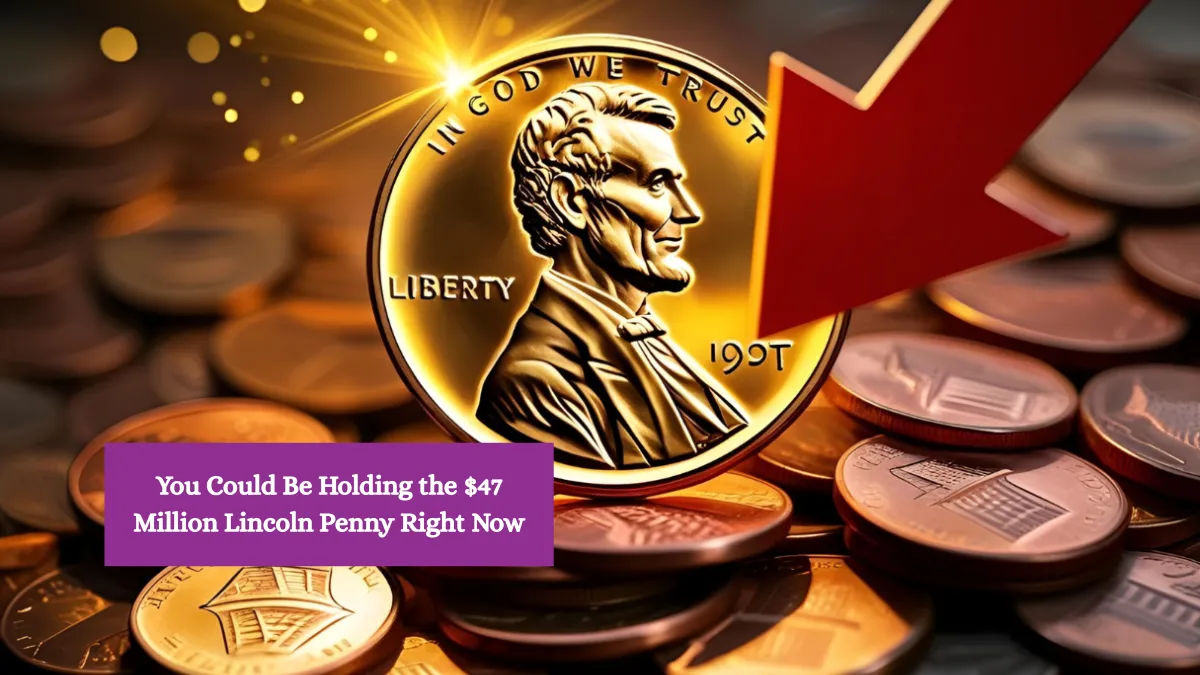Imagine finding a coin in your pocket change that could change your life forever. That’s not just a dream—it’s a very real possibility. According to top numismatists and collectors, a Lincoln Wheat Penny, valued at an unbelievable $47 million, could still be hiding in everyday circulation.
This isn’t a hoax or urban legend. It’s a case of rare minting errors, historical relevance, and collector demand coming together to form the perfect storm of value. So what’s the story behind this jaw-dropping penny? Could you really find it in your spare change?
Let’s dig into the mystery and reality of this record-breaking coin.
What Is the Lincoln Wheat Penny?
The Lincoln Wheat Penny—also called the Wheat Cent—was minted by the United States from 1909 to 1958. It was the first U.S. coin to feature a real person, President Abraham Lincoln, and was designed by Victor D. Brenner.
The reverse side features two wheat stalks encircling the words “ONE CENT.” These coins were primarily made of 95% copper, but during specific war years, materials were altered—leading to some of the most valuable minting errors in coin history.
Why This Penny Is Worth $47 Million
The specific Lincoln Wheat Penny believed to be worth $47 million is said to be a one-of-a-kind 1943 bronze planchet strike—minted accidentally during World War II. But what makes it different from other valuable Wheat Pennies?
Key Reasons for the $47 Million Valuation:
- Material Error: In 1943, pennies were supposed to be made of steel due to wartime copper shortages. However, some bronze (copper) planchets were mistakenly used.
- Incredible Rarity: Fewer than 20 authentic 1943 bronze Lincoln pennies are known. But this one is rumored to be a pristine uncirculated specimen, possibly the only known flawless example.
- Historical Context: Wartime minting errors have added historical weight and desirability.
- Perfect Condition: The coin in question is graded as MS-68 or higher—mint state condition, which is extremely rare for a 1943 bronze cent.
- Collector Demand: With wealthy collectors competing, bidding wars can push prices into the tens of millions.
Many believe that this unique specimen has yet to be discovered—or has gone unnoticed in a private collection, old coin jar, or estate sale.
How Could a $47 Million Coin Be in Circulation?
It may seem impossible, but history has shown us that people unknowingly spend rare coins every day. Here’s why:
- Public Unawareness: Most people aren’t trained to recognize rare coins.
- Inherited Collections: Coins passed down from grandparents often end up in circulation.
- Mistaken Identity: A bronze penny might appear like any regular old coin.
- Coin Counting Machines: Banks and vending machines don’t detect rare materials or misprints.
There’s a very real chance that this $47 million Wheat Penny could be sitting in someone’s change jar, completely overlooked.
How to Identify the $47 Million Lincoln Wheat Penny
Think you’ve found something special? Here’s how to check if your penny might be the legendary one.
Look for These Features:
- Year: 1943
- Color: A reddish-brown tone (bronze), not silver-colored like the standard 1943 steel penny.
- Magnet Test: Steel pennies stick to magnets. Bronze pennies do not.
- Weight: Bronze pennies weigh about 3.11 grams, steel versions about 2.7 grams.
- Mint Mark: Look for “D” (Denver), “S” (San Francisco), or no letter (Philadelphia) under the date.
Never clean your coin. Cleaning can damage it and lower its value dramatically. Always have rare coins evaluated professionally.
Other High-Value Lincoln Wheat Pennies
Even if you don’t find the $47 million specimen, other Lincoln Wheat Pennies can also fetch high prices:
- 1909-S VDB: The first-year issue with the designer’s initials. Worth over $1,000–$5,000.
- 1914-D: Rare and valuable, even in average condition. Worth $3,000+.
- 1922 “No D”: A rare misprint from the Denver mint. Up to $15,000 in high grades.
- 1955 Double Die: Known for its doubling effect on the text. Can sell for $1,000 to $15,000.
These coins are not billion-dollar treasures, but they are still highly collectible and worth more than most people realize.
Why Rare Pennies Are Exploding in Value
Rare coin prices are surging due to a combination of factors:
- Limited Supply: Many rare coins are lost or destroyed over time.
- Increased Demand: Wealthy private collectors, investors, and museums compete for these items.
- Publicity: Viral stories of coins worth millions increase interest among casual collectors.
As a result, even lesser-known Wheat Pennies are seeing price hikes, and the most legendary coins—like the rumored $47 million penny—gain almost mythic status.
The Bottom Line
The Lincoln Wheat Penny valued at $47 million isn’t just a fantasy—it’s a real, authenticated possibility based on rare minting errors, extreme condition, and insatiable collector demand.
Could it be in your pocket? Could it be in an old jar in the attic or inside a forgotten coin album from your grandfather? The answer is: Absolutely yes.
So take the time to check your change, examine your coin rolls, and be curious. You could be holding one of the most valuable coins in American history—worth more than a jet, a mansion, or even a professional sports team.
FAQs
Q1: Is the $47 million Lincoln Wheat Penny real?
Yes, the valuation is based on a unique 1943 bronze penny in mint state. While it hasn’t sold yet for that amount, the coin is believed to exist.
Q2: How can I tell if my 1943 penny is rare?
If it’s bronze-colored and doesn’t stick to a magnet, it could be a rare 1943 bronze Wheat Penny.
Q3: Where can I get my coin appraised?
Use trusted services like PCGS (Professional Coin Grading Service) or NGC (Numismatic Guaranty Company) for authentication and valuation.
Q4: Are other Wheat Pennies worth money?
Yes! Coins like the 1909-S VDB, 1914-D, and 1955 Double Die are all valuable and highly collectible.
